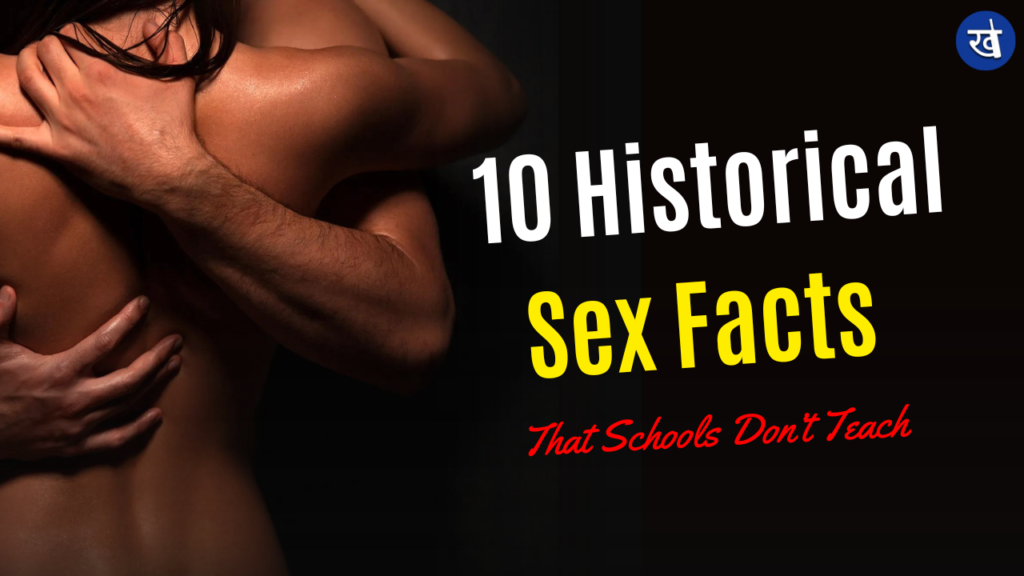
Sex education, typically a subject taught with scientific rigor and caution in schools, seldom dives into the unconventional and historically intriguing aspects of human sexuality. While the basics of anatomy and reproductive health are undoubtedly essential, there’s a vast realm of fascinating and lesser-known sexual history that often remains unexplored in the classroom. In this extended journey through the annals of human sexual history, we unveil 10 Historical sex facts, each marked by its own unique blend of curiosity, intrigue, and, at times, even amusement.
10 Historical Sex Facts Schools Rarely Teach
From ancient stone phalluses to papal orgies, these historical tidbits offer a glimpse into the diverse and colorful tapestry of human sexual experience. They illustrate how societies have, over centuries, grappled with issues of morality, desire, and intimacy. So, fasten your seatbelts, for we are about to embark on a captivating journey through time, uncovering the intriguing aspects of human sexuality that rarely make their way into textbooks.
1. The Oldest Known Dildo
The discovery of an ancient stone phallus in a German cave dating back over 28,000 years suggests that humans have been crafting sex toys for millennia. These early sex toys were created from materials like stone, wood, and leather, and their purpose wasn’t limited to pleasure but could have included religious or symbolic significance. This finding demonstrates that human curiosity about sexual pleasure and satisfaction dates back to the Paleolithic era.
2. The Kama Sutra
The Kama Sutra, often erroneously seen as a manual solely for sexual positions, is a comprehensive text that explores much more than just the physical aspects of sex. Composed in ancient India, this guide to living and loving delves into the realms of sensuality, relationships, and even courtship rituals. It provides valuable insights into the importance of mutual respect, understanding, and emotional intimacy within a sexual relationship.
Also Read– Sunny Leone’s Bollywood Success Story
3. The First Condoms
Condoms have a long history, but their early iterations differed significantly from today’s latex or polyurethane varieties. In the past, people used everything from animal intestines to fish bladders and linen sheaths to protect against STIs and unwanted pregnancies. The primary purpose was disease prevention rather than contraception. It wasn’t until the 19th century that rubber condoms, as we know them today, were developed.
4. Victorian Modesty
The Victorian era was known for its strict moral codes and emphasis on modesty and decorum. In a reflection of these attitudes, many individuals covered table legs and other objects, believing that any hint of sexuality or immodesty should be concealed. This may sound peculiar by modern standards, but it illustrates the degree of sexual repression during the time.
5. Dr. John Harvey Kellogg
Dr. John Harvey Kellogg, the inventor of Kellogg’s cereal, was a staunch advocate for abstinence and believed that a bland diet could help curb sexual desires. He developed cornflakes, not as a tasty breakfast option, but as part of his strategy to reduce sexual urges. This unique approach to sex education reflects the influence of moral and religious values on sexual beliefs during his time.
6. The First Vibrators
Now we need to go back to 19th century to complete our historical sex facts list. In the late 19th century, doctors used manual vibrators to treat “hysteria” in women. Hysteria, a condition now recognized as sexual frustration or emotional distress, was commonly diagnosed in women during the Victorian era. The treatment involved manual stimulation of the genitals to induce “hysterical paroxysm” (orgasm), leading to the invention of early vibrators as a medical tool. This fascinating historical tidbit highlights the changing perceptions and understanding of women’s sexuality.
Also Read– Horoscope Compatibility: Myth or Relationship Fun?
7. The First Sex Manual
“The Perfumed Garden,” written by Sheikh Nefzaoui in the 15th century, is an Arabic sex manual that goes beyond simple sexual positions. It provides in-depth discussions of various sexual techniques, positions, and advice on enhancing sexual pleasure. This ancient text underscores the historical appreciation for sexual knowledge and the importance of healthy and fulfilling sexual relationships.
8. Napoleon’s Sex Life
Napoleon Bonaparte, the famed French military leader and emperor, had a passionate and sometimes explicit correspondence with his wife, Josephine. These letters reveal his intense desires and provide a rare glimpse into the romantic and sexual life of a historical figure.
Also Read– 8 Stunning Pics Of Esha Gupta In Bikini
9. Marie Stopes
One of another historical sex facts is related to Marie Stopes. Marie was a pioneering advocate for birth control in the early 20th century. She opened the first birth control clinic in the UK in 1921, providing women with contraceptive advice and information. Her work was instrumental in advancing women’s reproductive rights and sexual health education.
10. The Joy of Sex
“The Joy of Sex,” authored by Alex Comfort and published in the 1970s, was a groundbreaking sex manual that encouraged open discussion about sexual pleasure and intimacy. The book addressed topics such as sexual positions, communication, and sexual health, and it played a pivotal role in promoting sexual education and open conversations about sexuality during that era.
Also Read– 10 Amazing Countries That Pay You To Live There
These lesser-known historical sex facts provide a fascinating insight into the rich tapestry of human sexual history and how societal attitudes towards sex have evolved over time. They also remind us that, while some aspects of sexual knowledge and expression have changed, many fundamental human experiences and curiosities have remained constant throughout the ages.